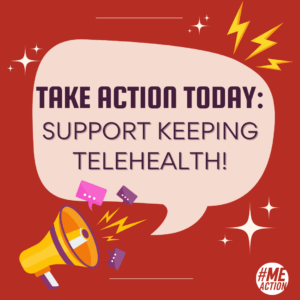A study scheduled for our December research roundup entered the limelight yesterday due to an SMC campaign in the UK.
The study that has everyone talking is a study at King’s College London called Persistent fatigue induced by interferon-alpha: a novel, inflammation-based, proxy model of Chronic Fatigue Syndrome and features some familiar faces, including Chalder. The paper can be found here.
The study posits or implies the following:
- Long-term fatigue post Hep C infection is produced by IFN-α treatment
- Fatigue induced by IFN-α administration can serve as a model for Oxford CFS
- 33% of a 55-person sample with Hep C infection and IFN-α treatment were found to be fatigued 6-mo post-treatment, where fatigue was measured using the Chalder fatigue scale, and increased fatigue was defined as a lower value on that scale
- Post-Hep C, post-IFN-treatment fatigue (pIFNF) by this definition was compared to 54 people with CFS and 57 healthy volunteers
- People with post-Hep C, post-IFN-treatment fatigue (pIFNF) tended to experience worse fatigue early on in IFN-α treatment as compared to those who did not go on to develop pIFNF
- People with pIFNF tended to have higher baseline levels of IL-6 and IL-10 — that is, before treatment. The researchers assert this implies that their immune system was over-active to begin with.
- Peripheral inflammation was not an issue in any cohort.
- Kynurenine-based metabolites were dysregulated in the Oxford CFS group.
- There was no difference in past trauma between groups that did and did not experience post-IFN, post-Hep C fatigue.
There are some things worth noting straightaway:
- This is a post-viral, post-IFN-treatment fatigue study that uses Oxford rather than any of the criteria with PEM to identify its CFS group. Thus, presuming the study is performed well, one can draw conclusions about post-viral, post-IFN chronic fatigue (pIFNF), and fatigue as the result of a variety of triggers and circumstances (Oxford), but not ME as a disease.
- The study is small, with 18 people with pIFNF compared to 54 people with Oxford-identified CFS.
- IL-10 and IL-6 have been found elevated in people with ME quite a few times, especially given how inconsistent cytokine studies are as a rule. Broderick et al. (Klimas’s group) found that IFN levels were associated with IL-6 levels in pwME. You can also check out Light et al., 2009, Hardcastle et al., 2015, Hornig et al., 2015, Gaab et al., 2005, Carlo-Stella et al., 2006, and ter Wolbeek et al., 2007 for more on elevated IL-10 and/or IL-6 in people with ME, CFS, or ME/CFS.
- Traumatic childhood events have been shown to be associated with all-cause mortality in many, many studies. This might be the first study performed by psychosomatic theorists to compare traumatic experiences in people with chronic fatigue to traumatic experiences of people with another debilitating illness and no fatigue (Hep C infection). That implies that there is no special or specific relationship between the symptom of chronic fatigue and childhood trauma.
In general, this is a small study that may have interesting implications for post-viral chronic fatigue. While the study has aspects that are potentially interesting, it ends up comparing (possibly) IFN-α-induced fatigue, but possibly garden-variety post-infectious fatigue, to Oxford CFS; and since Oxford CFS is such a broad category, it has the potential to include individuals with the same etiology in the pIFNF group. It would have been interesting to see their pIFNF group compared to a group that experiences PEM.
Finally, while the measurements are objective, the study says nothing about ‘perpetuating factors’. Many psychosocial theorists support an infectious or immune trigger for ME but state that psychological factors then perpetuate the disease, or that despite infectious and immune triggers, CBT and graded exercise remain the best possible treatments. Considering some of the authors of this paper subscribe to this paradigm, the next logical step for them would be to attempt to show a connection between psychosocial theories and the results presented here.
Even so, given that IL-6 and IL-10 dysregulation are so common in the ME literature, the researchers may have dropped a few breadcrumbs for those with a biomedical bent to follow. And let’s not forget that the paper shows childhood trauma is no more common in people who do develop long-standing fatigue than in those who do not. This is a win for those patients who’ve been told to heal emotional trauma in order to recover their physical well-being.





11 thoughts on “Post-interferon fatigue study: a mixed bag”
Hopefully the group will not go down the biopsychosocial pathway. I see no reason for them too actually. The hepatitis C / interferon connection has prompted a lot of biological work. In fact, interferon induced fatigue prompted perhaps the first understanding that the immune system and the brain were producing fatigue and other symptoms during infection not the pathogen.
Andrew Miller has found that interferon treatment produces essentially the same changes in the brain in severely fatigued hepatitis C patients and people with ME/CFS. These changes involve basal ganglia – a part of the brain involved in movement, reward and fatigue.
The biological investigations into the causes of interferon induced fatigue, psychomotor slowing (also found in ME/CFS), sleep problems, etc have been extensive and very illuminating! Check out some of Andrew Miller’s work here – https://www.ncbi.nlm.nih.gov/pubmed/?term=interferon+hepatitis+c+fatigue++miller
And the basal ganglia work he’s done in ME/CFS is fascinating. https://www.healthrising.org/blog/2014/09/15/unrewarding-reward-basal-ganglia-inflammation-fatigue-chronic-fatigue-syndrome/
The most interesting part, for me, though, is the possibility that inflammation prompted by interferon, or in the case of ME/CFS, by a pathogen, is able to knock out a part of the basal ganglia which produces dopamine – which then renders the system hypersensitive to further inflammation – thus presenting a potential model of not only hypersensitized microglia – which Younger believes in present in ME/CFS – but a viable way of explaining the problems with physical activity.
http://simmaronresearch.com/2018/12/immune-factor-jump-start-chronic-fatigue-syndrome-me/
Miller’s work, unfortunately, was not referenced by the English group which found no evidence that psychological factors played a role at all.
Given the rich biological vein that’s been opened by the hepatic C/Interferon studies hopefully future studies by this group will continue to mine that part of it.
Hopefully the group will not go down the biopsychosocial pathway. I see no reason for them too actually. The hepatitis C / interferon connection has prompted a lot of biological work. In fact, interferon induced fatigue prompted perhaps the first understanding that the immune system and the brain were producing fatigue and other symptoms during infection not the pathogen.
Andrew Miller has found that interferon treatment produces essentially the same changes in the brain in severely fatigued hepatitis C patients and people with ME/CFS. These changes involve basal ganglia – a part of the brain involved in movement, reward and fatigue.
The biological investigations into the causes of interferon induced fatigue, psychomotor slowing (also found in ME/CFS), sleep problems, etc have been extensive and very illuminating! Check out some of Andrew Miller’s work here – https://www.ncbi.nlm.nih.gov/pubmed/?term=interferon+hepatitis+c+fatigue++miller
And the basal ganglia work he’s done in ME/CFS is fascinating. https://www.healthrising.org/blog/2014/09/15/unrewarding-reward-basal-ganglia-inflammation-fatigue-chronic-fatigue-syndrome/
The most interesting part, for me, though, is the possibility that inflammation prompted by interferon, or in the case of ME/CFS, by a pathogen, is able to knock out a part of the basal ganglia which produces dopamine – which then renders the system hypersensitive to further inflammation – thus presenting a potential model of not only hypersensitized microglia – which Younger believes in present in ME/CFS – but a viable way of explaining the problems with physical activity.
http://simmaronresearch.com/2018/12/immune-factor-jump-start-chronic-fatigue-syndrome-me/
Miller’s work, unfortunately, was not referenced by the English group which found no evidence that psychological factors played a role at all.
Given the rich biological vein that’s been opened by the hepatic C/Interferon studies hopefully future studies by this group will continue to mine that part of it.
I had interferon treatment for Hep C. I’ve always said it changed who I was, mentally and physically. I suffer from chronic fatigue and depression now. I’ve tried several anti-depressants and nothing seems to work. Please tell me I’m not hopeless
I’m so sorry to hear this, Terry. I don’t know much beyond the article about the study, but are you connected with our online community? The Living with ME Facebook group is a great place to ask questions from others with ME, and find support.
https://www.facebook.com/groups/211058135999671/?fref=nf
Take good care,
Adriane
I had interferon treatment twice and never “bounced back”, been disabled 8 years so thankfully I don’t have to try to work with the fatigue, anxiety, and depression. There are ways to be content with a slower life, and I’d have been dead of liver disease by now if I hadn’t done it.
I too had “successful” interferon treatment in 2006/7 and was diagnosed with with Post interferon fatigue syndrome in 2011 which does indeed mirror ME with PEM and swollen glands included. I think interferon production needs investigation.
I too had “successful” interferon treatment in 2006/7 and was diagnosed with with Post interferon fatigue syndrome in 2011 which does indeed mirror ME with PEM and swollen glands included. I think interferon production needs investigation.
I have given up trying to get answers regarding my fatigue and body aches caused by 6 months of interferon and ribavirin. I have now excepted the damage caused to me.post treat 6 years. Hep c is cleared. No longer work.live on benefits. Should be on pension. Big pharmaceutical will never own up.and doctors work for them.
I’m in Australia. 10yr post interferon and riba and suffer the worst insomnia and fatigue and pain for many years, had no idea any of it could be related. My short term memory is shot. I will put things where they don’t belong. Have to set calendar reminders. I feel awful majority of the time.
Comments are closed.